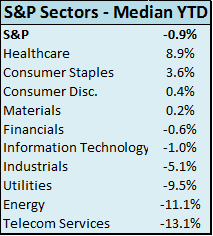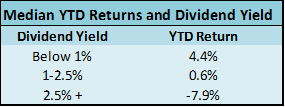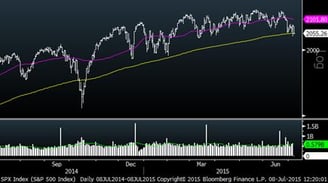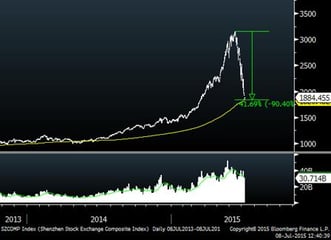Year To Date Returns
Now that we have entered the third quarter, I thought it might be interesting to look back at the performance of different market sectors. Year to date, the S&P 500 is roughly flat and the typical (median) stock is down about one percent. On a sector basis, as you can see below, the market has been quite bifurcated. Investors who have been heavily invested in healthcare or consumer staples have likely outperformed while investors in industrials, utilities, energy and telecom have underperformed. Considering the variance in sector returns, I would expect to see a fair amount of dispersion between active managers on a year-to-date basis.

Looking at the table above, I noticed that sectors that pay high dividends appear to be down more than those that don’t. The chart below shows YTD median stock returns broken down by dividend yield. Clearly, dividend paying stocks have been punished this year, while those that do not pay much of a dividend have been mostly unscathed.

NYSE Trading Suspended
NYSE trading was suspended for much of today due to a technical glitch. Given that it happened on the same day the United Airlines computers went down, a lot of people are correlating the two and spreading rumors of a cyber-attack. My guess is that these are two random events. The NYSE has a long history of outages due to a number of issues. Apparently, in the old days, it went down frequently due to telephone issues. The outage today is not as critical as one might think; the floor only handles 20% of listed trades today versus 85% as recently as the late 1990s. So, while the outage created some anxiety, stocks continued to trade without major issues.
Recent Market Activity
As the media has been covering closely, the US markets have been a bit skittish as of late. As we know, the market hates uncertainty and the destiny of Greece has definitely been uncertain. Richard Alt, a principal here at Carnegie Investment Counsel, recently wrote a well thought-out blog regarding Greece; click here to read it. Right or wrong, until the uncertainty with Greece is mostly behind us, the market will likely continue to be volatile. As you can see from the chart below, the S&P 500 is down about 4% from its recent high, which is no big deal and has made no headway in over eight months. For those more technically oriented, the S&P is sitting right at its 200-day moving average, which is a closely watched indicator of strength/weakness.
S&P 500 (One Year)

China
The recent weakness in the Chinese equity markets makes the recent U.S. market blip seem like nothing. As you can see below, the Shenzhen Composite, after being extremely strong, is down an astonishing forty-plus percent in less than a month.
Shenzhen Composite




